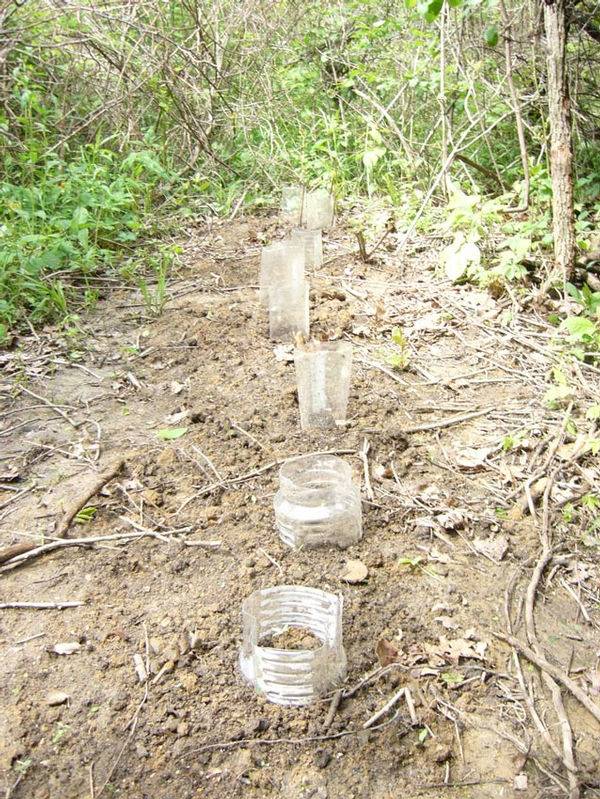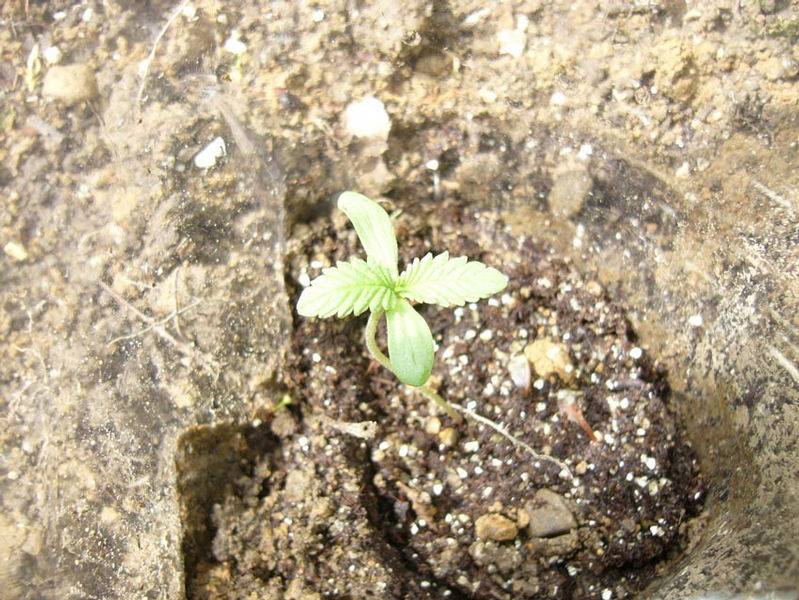Never used too much kelp. It's more about budget and getting the best bang for the buck.
I feel the same way about insect frass. Can't use too much.
So I'm pretty set (I think) on my soil amendments for this year...
This is an old pic from a few years ago, but you can get an idea of the soil typical in my neck of the woods. It's a clay, but that shit dries out quick. I won't make the mistake of leaving dry, gray soil like that again... shit's a security risk.
So that's the type of dirt I generally have to work with, more or less. (Keep in mind the soil is already amended in that pic, but clearly not as well as it could have been)
So I'm gonna be using:
-Coco coir for aeration (seems to be the most practical option between it being easy to transport and wayyyyyyy cheaper than pumice & rice hulls)
-insect frass
-goat manure
-rabbit manure
-kelp meal
-pulverized lime
I'm gonna go pretty heavy on the three manures since they're all cold manures (meaning incredibly difficult if not impossible to burn plants with). 1 cup/cubic foot of insect frass, and then the goat and rabbit manure are probably gonna make up a third of each hole. Liberal with the kelp meal as well, and the trusty ol' (small, cuz of the coco coir's ph) handfull of pulverized, fast-acting lime.
I've generally done holes 3' in diameter, 18 inches deep in the middle, but I might go a little bigger. I'll probably dig the middle area a few inches deeper and throw all the small rocks I've dug up in there for a drainage pit. (If I find very decomposed branches/logs nearby, to the point where they basically crumble, I'll throw those on top of the rocks) I might also make the holes 4' in diameter as well, I think it could make a big difference in yield. This year I'm doing several 1 plant plots, and so it'll be a bit less tiring to make the holes bigger (when you're digging between 4 and 8 large holes per plot... you guys know).
Got some clover I'm gonna throw down as a cover crop as well.
A question about the coco: Can I mix a little bit of the compressed brick (like 20% the amount I want to end up with) in the hole and wait for it to expand with the rain? Or could that cause problems (pushing seedlings out if done too close to planting, mold from not being mixed/broken up well as it's hydrated)? Should I bring some big tupperware or cut a couple milk jugs in half and use those to hydrate it while I'm digging the holes?
Thanks for all the help, guys.




